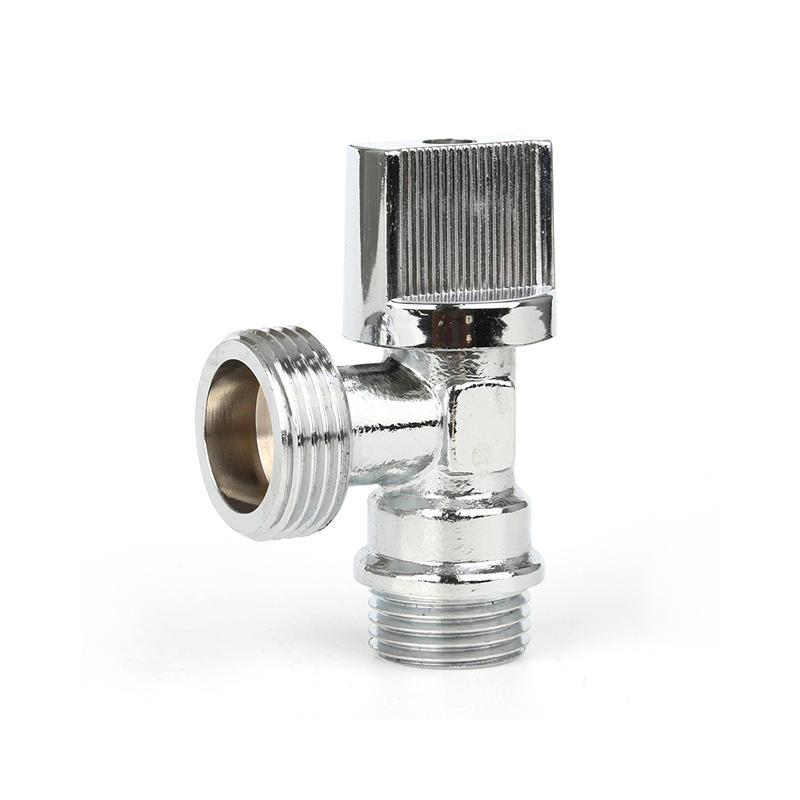In residential plumbing systems, valves play a crucial role in controlling the flow of water and regulating water pressure to various fixtures and appliances. Two common types of valves used in residential plumbing are angle valves and gate valves. While both serve similar purposes, they differ in design, functionality, and suitability for specific applications. In this article, we will compare angle valves to gate valves in residential plumbing systems, examining their features, advantages, disadvantages, and typical uses to help homeowners make informed decisions when selecting valves for their plumbing needs.
Anatomy and Design:
Angle valves, also known as stop valves or angle stops, feature a 90-degree bend in their body, giving them an L-shaped appearance. This design allows angle valves to be installed in tight spaces or corners where straight-line access may be limited. Angle valves typically have a threaded inlet connection that attaches to the water supply pipe and a compression or threaded outlet connection for attaching the water supply line to the fixture or appliance. The valve stem is operated by a handle or knob, which, when turned, controls the flow of water through the valve.
Gate valves, on the other hand, have a straight-through design with a rising stem mechanism. The valve body is typically larger and more cylindrical in shape, with a wheel-shaped handle that operates the gate mechanism inside the valve. When the handle is turned clockwise, the gate inside the valve rises to allow water flow, and when turned counterclockwise, the gate lowers to shut off the flow of water completely. Gate valves are designed for full flow control and are commonly used in applications where on/off control is required, such as main water shutoff valves or isolation valves.
Functionality and Operation:
Angle valves are primarily used for on/off control of water flow to individual fixtures or appliances, such as sinks, toilets, and faucets. They are typically installed at the point where the water supply pipe connects to the fixture, allowing for easy access and convenient shut-off in case of emergencies or repairs. Angle valves are operated by turning the handle clockwise to close the valve and counterclockwise to open it. They provide a simple and effective means of controlling water flow to specific areas of the plumbing system without affecting the rest of the system.
Gate valves, on the other hand, are designed for full flow control and are commonly used as main shutoff valves or isolation valves in residential plumbing systems. They are installed at strategic points in the plumbing system, such as where the water supply enters the house or where branches connect to the main water line. Gate valves are operated by turning the wheel handle clockwise to open the valve and counterclockwise to close it. They offer more precise control over water flow and are typically used in applications where a complete shutdown of water flow is necessary, such as during maintenance or repairs.
Advantages of Angle Valves:
Angle valves offer several advantages in residential plumbing systems:
Space-saving design: The compact, L-shaped design of angle valves allows them to be installed in tight spaces or corners where straight-line access may be limited.
Easy accessibility: Angle valves are typically installed close to the fixture or appliance they serve, making them easy to access for maintenance or repairs.
Quick on/off control: Angle valves provide quick and convenient on/off control of water flow to individual fixtures or appliances, allowing for easy shut-off in case of emergencies or repairs.
Advantages of Gate Valves:
Gate valves offer several advantages in residential plumbing systems:
Full flow control: Gate valves are designed for full flow control, allowing for precise regulation of water flow in the plumbing system.
High durability: Gate valves are typically made of durable materials such as brass or stainless steel, making them resistant to corrosion and wear.
Longevity: Gate valves are known for their long service life and reliability, making them ideal for use as main shutoff valves or isolation valves in residential plumbing systems.
Typical Uses:
Angle valves are commonly used in residential plumbing systems for the following applications:
Connecting water supply lines to sinks, toilets, faucets, and other fixtures.
Shutting off water flow to individual fixtures or appliances during maintenance or repairs.
Gate valves are commonly used in residential plumbing systems for the following applications:
Main shutoff valves: Gate valves are often installed at the main water supply entry point to the house, allowing for a complete shutdown of water flow to the entire plumbing system.
Isolation valves: Gate valves are used to isolate specific sections of the plumbing system for maintenance or repairs, such as shutting off water flow to a particular branch line or fixture.
Conclusion:
In conclusion, the angle valves and gate valves both play important roles in residential plumbing systems, offering distinct features and advantages for different applications. Angle valves are ideal for on/off control of water flow to individual fixtures or appliances, thanks to their space-saving design, easy accessibility, and quick on/off operation. Gate valves, on the other hand, are designed for full flow control and are commonly used as main shutoff valves or isolation valves in residential plumbing systems, thanks to their precise regulation of water flow, high durability, and long service life. By understanding the differences between angle valves and gate valves and their typical uses, homeowners can make informed decisions when selecting valves for their plumbing needs.

 English
English русский
русский Deutsch
Deutsch












